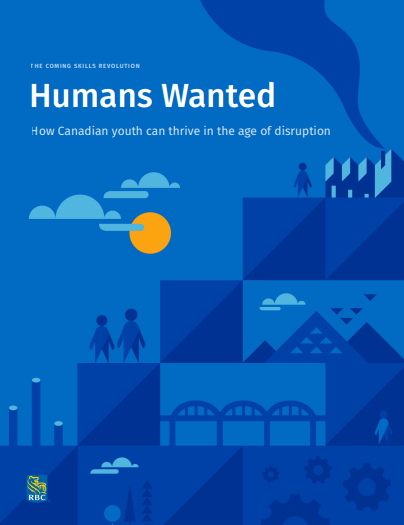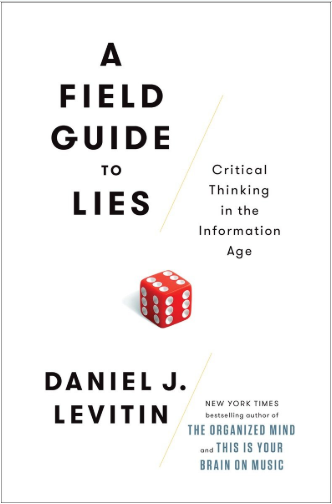 In the 2018 RBC Royal Bank report, Humans Wanted: How Canadian youth can thrive in the age of disruption, active listening, speaking, critical thinking, and reading comprehension are at the top of the list of “projected skills demands, for all occupations”.
In the 2018 RBC Royal Bank report, Humans Wanted: How Canadian youth can thrive in the age of disruption, active listening, speaking, critical thinking, and reading comprehension are at the top of the list of “projected skills demands, for all occupations”.
IMHO, of those top four “most important” skills, critical thinking doesn’t get enough attention, yet – was there ever a time when its needed more?
The problem
We all think – more or less. Thoughts run through our heads. Yet – what is the quality of our thinking?
Much of our thinking, left to itself, is biased, distorted, partial, uninformed, or downright prejudiced. Its easy to miss the mark. When I get too cocky, in my own thoughts, I remind myself of that African proverb, “Alone I have seen many beautiful things, none of which are true.”
Yet, the quality of our work, and life, depends precisely on the quality of our thought. Careless thinking can be costly, in so many ways.
Improving the quality of your thoughts is similar to building any new habit. Habits, though, are hard to change. (and here’s my favourite Canadian metaphor as to why that is) Critical thinking skills must be systematically cultivated.
A well-cultivated critical thinker
Let’s start with the end goal in mind. The Foundation for Critical Thinking states that a well-cultivated critical thinker:
- Raises vital questions and problems, formulating them clearly and precisely
- Gathers and assesses relevant information, using abstract ideas to interpret it effectively
- Comes to well-reasoned conclusions and solutions, testing them against relevant criteria and standards
- Thinks openmindedly within alternative systems of thought, recognizing and assessing, as needs be, their assumptions, implications, and practical consequences
- Communicates effectively with others in figuring out solutions to complex problems
So – how do we get to become a better critical thinker?
Three ways to hone your critical thinking skills
1. Check your biases.
The list of cognitive biases, a subset of our unconscious biases, is long (150+). Biases influence how we behave in the world, the questions we ask, and the solutions we seek. Courtesy of Dr. Tyrone Holmes, here are three ways to minimize the extent that unconscious bias impacts your decision-making process.
2. Watch for logical fallacies.
Somewhat different than those mental shortcuts that seem to be hardwired into our human brain (i.e., our biases), faulty logic is the product of sloppy thinking or, in some cases, deliberate intellectual dishonesty, designed to make a weak argument appear stronger.
Common logical fallacies include:
- ad hominem attack – criticizing the person making the argument rather than the argument itself (e.g., “That’s ridiculous. What do accountants know about customer service?”)
- false dichotomy – oversimplifying the argument by reducing it to black-and-white choices (e.g., “It’s up to you: We can either approve the plan or go out of business.”)
- red herring – introducing an irrelevant topic in an attempt to shift the argument away from the original issue (e.g., “Forget the design problems; what we really should be talking about is how marketing screwed up.”).
There are many other logical fallacies out there – any logic course at your local academic institution will no doubt elaborate on them, as will many books on critical thinking…
3. Ask good questions (full stop)
When the problem is particularly complicated and/or controversial, and to gain a deeper understanding of the argument presented, conduct a more formal analysis using an ‘argument dissection framework’. Ask these questions: (I got this helpful list of questions via Red Teaming: How Your Business Can Conquer The Competition by Challenging Everything by Bryce Hoffman)
- does this argument address the real problem?
- what is the point of view of the person or group making this argument?
- does the argument include any vague or ambiguous words or loaded language?
- does the argument include any value conflicts?
- does the argument include any descriptive assumptions (i.e., statements about the way things are?)
- does the argument include any prescriptive assumptions (i.e., statement about the way things should be)?
- are there hints of bias? if so, what is that bias?
- does the argument include any logical fallacies?
- how good is the evidence used to support the argument?
- if statistics are provided, how good are they? are they presented with the proper context?
- what information is missing from the argument?
- is the argument based on intuition or a “gut feeling”? (note: if you’re curious about when to rely on gut feelings, refer to my post on that topic)
- if the argument relies on analogies, are they appropriate to the situation?
- are there any rival causes or other plausible hypotheses?
- could a different conclusion be drawn from the same evidence?
- what are the implications of accepting the argument as stated?
The above can be used to better analyze most any challenging problem. If looking for a simple place to start your critical analysis, use a subset of the above questions, as appropriate.
Good questions are a gold mine, if not priceless.
The world needs your critical thinking
 As another helpful resource to improve your critical thinking skills, I recommend Daniel Levitin’s, A Field Guide to Lies: Critical Thinking in the Information Age.
As another helpful resource to improve your critical thinking skills, I recommend Daniel Levitin’s, A Field Guide to Lies: Critical Thinking in the Information Age.
With information overload, “fake news”, anonymous sources… dominating our lives, the need for more critical thinking is essential, for your personal health and growth, and the collaborations, workplaces, and communities you/we care about.
How are you addressing the deficit in critical thinking?
[Ben Ziegler is a collaboration and conflict management specialist serving SMEs, nonprofits, and local governments. Contact Ben.]

Speak Your Mind